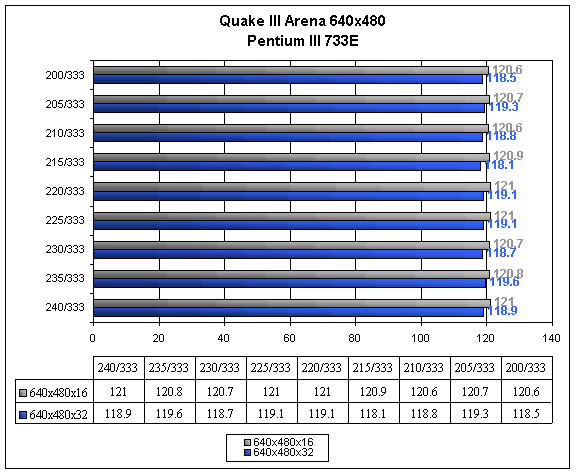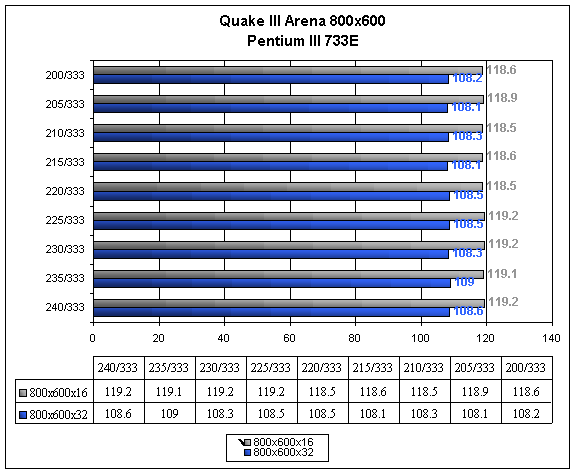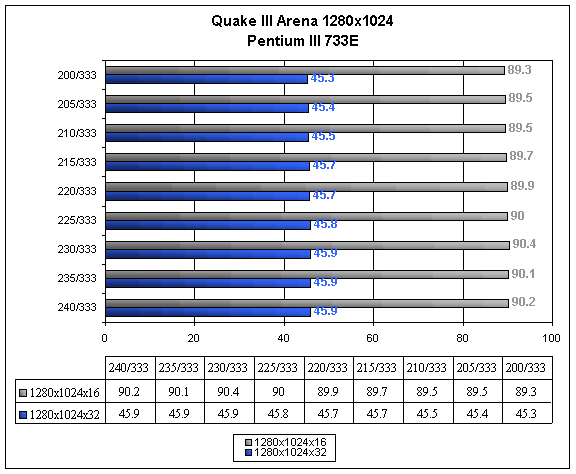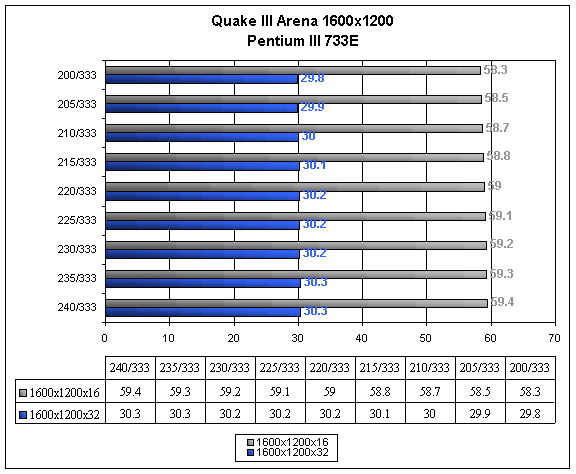Overclocking: The Core
We already know that the GeForce 2 GTS GPU is fast, but how fast can we make it? To find the answer to this we tested both Quake III Arena demo001 under normal settings. By raising the core speed in increments of 5 MHz while maintaining the stock memory speed, we were able to observe what effect overclocking the core has upon the GeForce 2 GTS. Let's take a look at the results





If the results look surprising, they should. It seems that even when we overclock the GeForce 2 GTS GPU to the maximum speed it will go before loosing stability, 240 MHz, that the speed increases are nominal, at best. At resolutions below 1024x768x32, the numbers fluctuate so much that they are essentially the same. Even when at 1024x768x32 and above, we find that the speed increase are not around 3 FPS like we found for every 5 MHz core speed increase in the GeForce 256. In fact, the speed increases associated with a 5 MHz rise in the core speed of the GeForce 2 GTS was along the lines of .1 FPS. The largest speed increase seen from 200 MHz to 240 MHz was 1.9% speed increase when at 1600x1200x16, a FPS gain of 1.1 FPS. The average speed gained from this massive 40 MHz overclock was around 1.3%, a speed increase more commonly associated with a 5 MHz or less overclock in the core.
Could we perhaps be experiencing a bottleneck in the system? It seems most likely. Could the bottleneck be in the memory? Let's take a look and see what overclocking the memory did to the performance of our card.










0 Comments
View All Comments